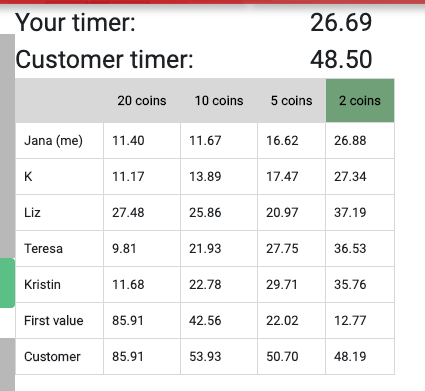
Chris led the group in the Penny Game using the online tool found here: https://www.solutioneers.co.uk/coingame/
This game, like the version played in person, is great for demonstrating what happens to cycle time, throughput, and optimization when changing batch size.
Generally, the game is played by each participant in the group flipping over a batch of pennies and then passing the batch to the next person and so on. The overall process is timed (ideally you would time each individual, too – which the link above does! – but this is frequently impractical for in-person simulations). In the first round, all 20 pennies are done as a single batch. The following rounds use batch sizes of 10, 5, 2 and 1.
Counter-intuitively, for small batch sizes, value is delivered to the customer faster despite each individual’s time going slower. Here’s an example of a typical iteration:

As you can see, the time the customer first received value and the overall time for them to receive all 20 coins went down as the batch size decreased. If we looked only at the individuals doing the work, however, we would see their total time going up (mostly) as batch size went down.
The point here is this: LOCAL OPTIMIZATION WILL RESULT IN SUB-OPTIMAL SYSTEM RESULTS. We need to be looking to optimize for the overall system, not any one person or team.